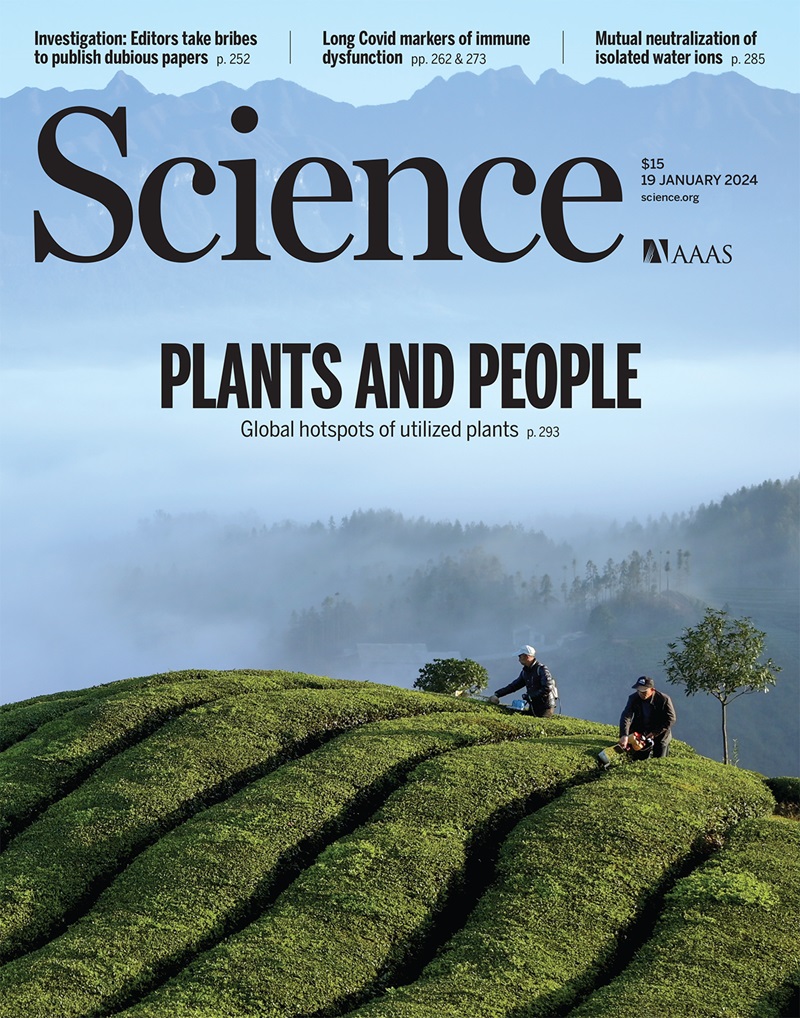Observed trend in Earth energy imbalance may provide a constraint for low climate sensitivity models
IF 44.7
1区 综合性期刊
Q1 MULTIDISCIPLINARY SCIENCES
Science
Pub Date : 2025-06-12
引用次数: 0
Abstract
Climate forcings by greenhouse gases and aerosols cause an imbalance at the top of the atmosphere between the net incoming solar radiation and outgoing longwave radiation from Earth. This Earth energy imbalance has strengthened over the period 2001 to 2023 with satellite data. Here, we show that low climate sensitivity models fail to reproduce the trend in Earth energy imbalance, particularly in the individual longwave and shortwave contributions to the imbalance trend. The inability to produce a strong positive shortwave and strong negative longwave Earth energy imbalance trend is found to be a robust feature in the low climate sensitivity models, especially for models with a climate sensitivity below 2.5 kelvin. The negative longwave contribution to Earth energy imbalance is driven by surface temperature increases and is therefore most pronounced in high climate sensitivity models, whereas the shortwave contribution is generally positive and amplified by greater surface warming.
观测到的地球能量不平衡趋势可能为低气候敏感性模式提供约束
温室气体和气溶胶造成的气候强迫在大气层顶部造成太阳净辐射和地球长波辐射的不平衡。根据卫星数据,这种地球能量不平衡在2001年至2023年期间有所加强。本文表明,低气候敏感性模式不能再现地球能量失衡的趋势,特别是对能量失衡趋势的个别长波和短波贡献。不能产生强的正短波和强的负长波地球能量不平衡趋势是低气候敏感性模式的一个显著特征,特别是对于气候敏感性低于2.5开尔文的模式。长波对地球能量不平衡的负贡献是由地表温度升高驱动的,因此在高气候敏感性模式中最为明显,而短波的贡献通常是正的,并因地表变暖而放大。
本文章由计算机程序翻译,如有差异,请以英文原文为准。
求助全文
约1分钟内获得全文
求助全文
来源期刊

Science
综合性期刊-综合性期刊
CiteScore
61.10
自引率
0.90%
发文量
0
审稿时长
2.1 months
期刊介绍:
Science is a leading outlet for scientific news, commentary, and cutting-edge research. Through its print and online incarnations, Science reaches an estimated worldwide readership of more than one million. Science’s authorship is global too, and its articles consistently rank among the world's most cited research.
Science serves as a forum for discussion of important issues related to the advancement of science by publishing material on which a consensus has been reached as well as including the presentation of minority or conflicting points of view. Accordingly, all articles published in Science—including editorials, news and comment, and book reviews—are signed and reflect the individual views of the authors and not official points of view adopted by AAAS or the institutions with which the authors are affiliated.
Science seeks to publish those papers that are most influential in their fields or across fields and that will significantly advance scientific understanding. Selected papers should present novel and broadly important data, syntheses, or concepts. They should merit recognition by the wider scientific community and general public provided by publication in Science, beyond that provided by specialty journals. Science welcomes submissions from all fields of science and from any source. The editors are committed to the prompt evaluation and publication of submitted papers while upholding high standards that support reproducibility of published research. Science is published weekly; selected papers are published online ahead of print.
 求助内容:
求助内容: 应助结果提醒方式:
应助结果提醒方式:


